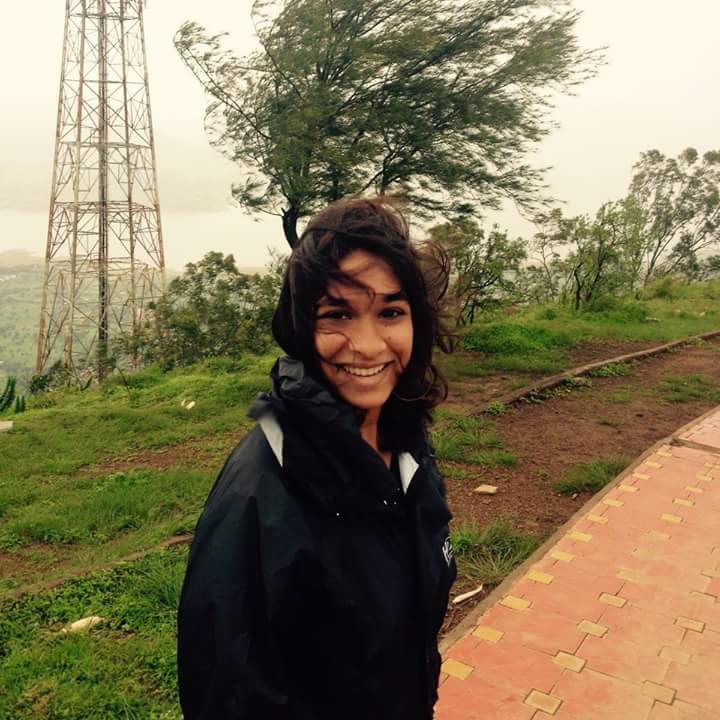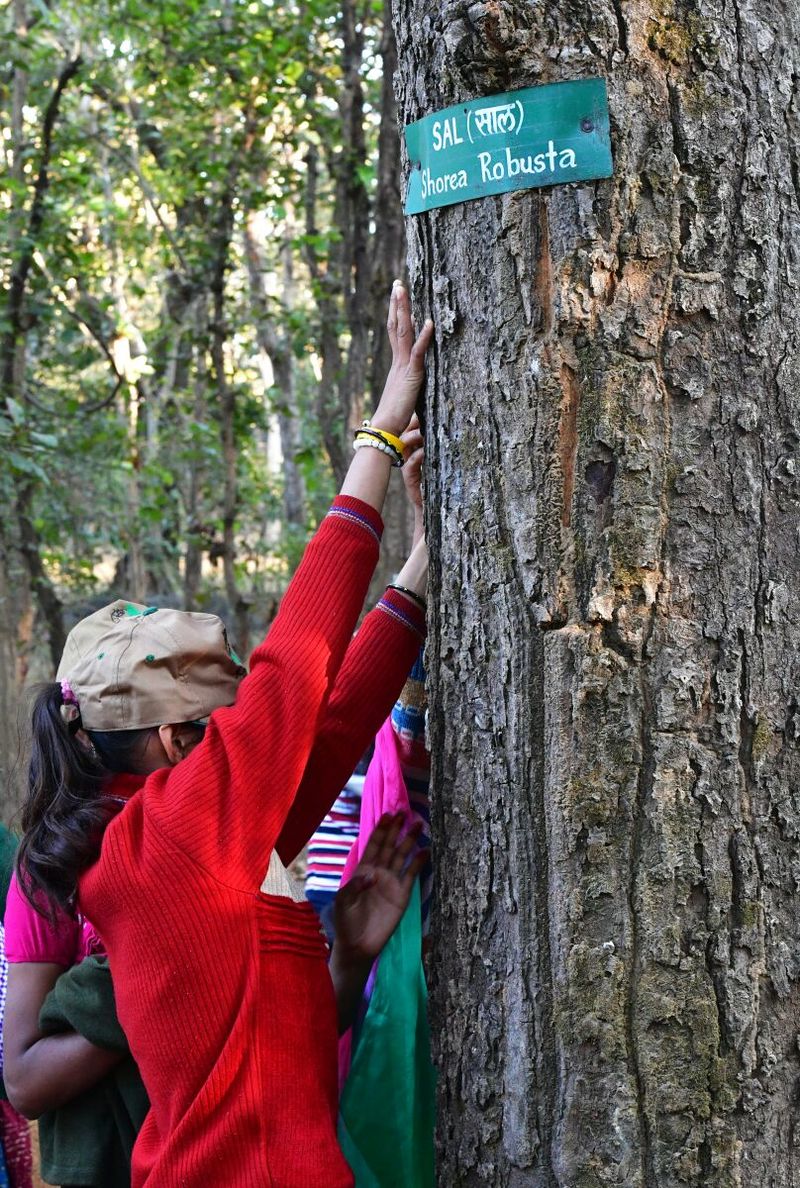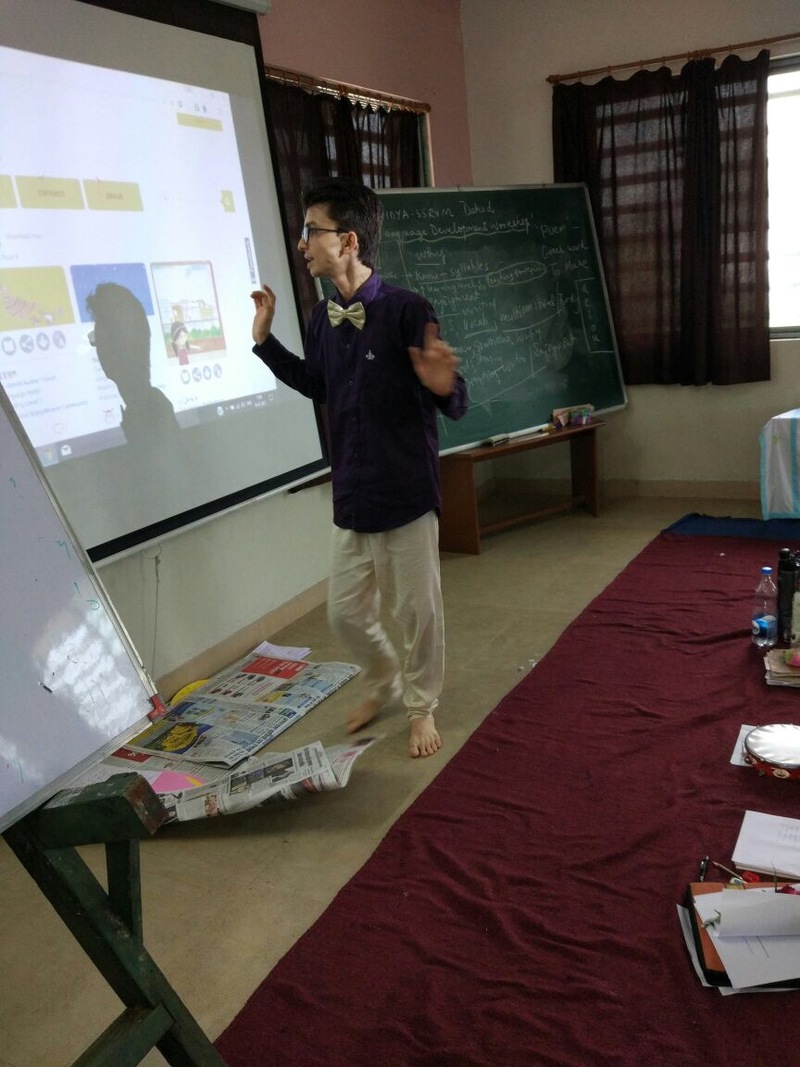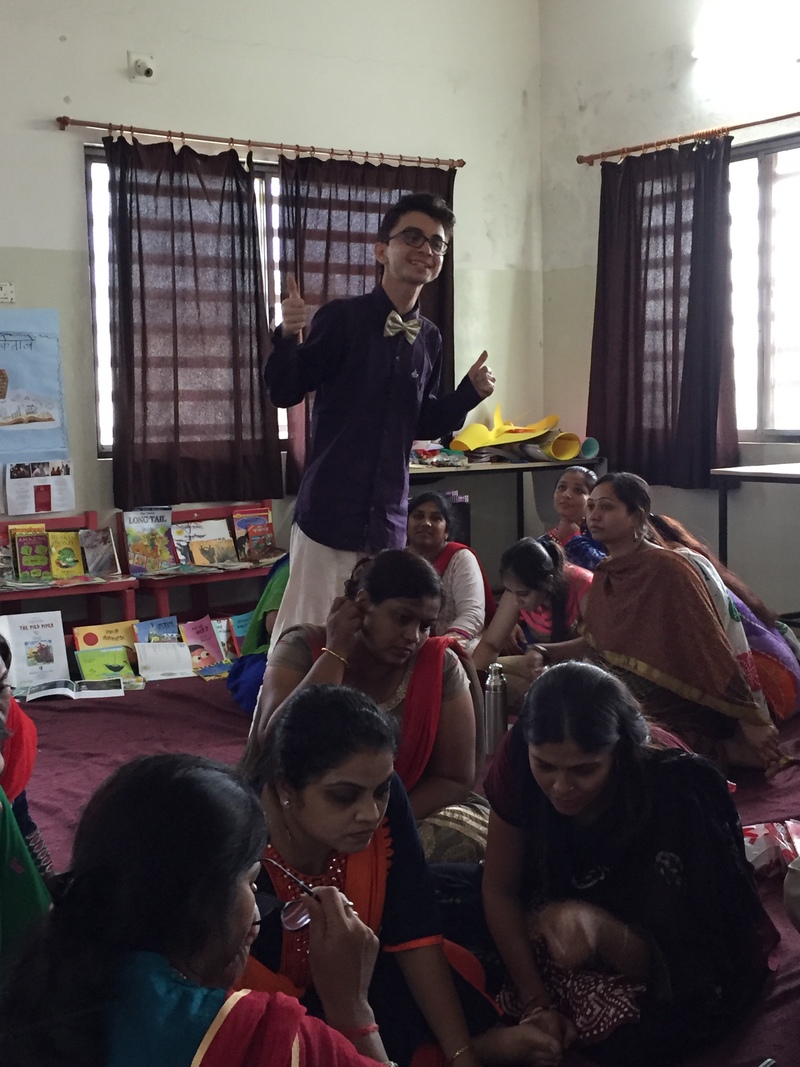StoryWeaver Spotlight: Utthana Bharighat
Posted by Remya Padmadas on September 29, 2018
Utthana Bharighat is an artist who likes to create narratives and has a deep interest in theatre, cinema and writing. He has translated books to Kannada for Pratham Books, adding translator to his accomplishments.
 Q: What type of person do you think makes the best translator for children’s stories?
Q: What type of person do you think makes the best translator for children’s stories?
Most importantly, the person should love children. A good translator is someone who is ready to interact with children unconditionally, and thus he or she understands their lingo and temperament well.
Q: Do you have any advice for anyone interested in becoming a translator?
Do it only if you find it fun! Otherwise translation could be boring and mechanical which shows up in your work too.
Q: A book you'd like to recommend to other translators?
There is a Kannada language translation of the Japanese novel Thousand Cranes by Yasunari Kawabata, by the name Savira Pakshigalu. I would recommend people to read both these texts to see how beautiful a translation can be. The Kannada translation is as elegant as the original.
Q: What is your personal relationship to language and/or translation?
Translation at one level is like solving puzzles. But to solve this, one has to take help from wide range of knowledge systems, including literature, culture, sociology, human nature and more. Thus, translation becomes an extension of exploring my interest.
Q: When you’ve been given a story to translate, what’s your process, and how long does it generally take?
A: I read the whole story, first. Then I think about the style in which this would sound good in Kannada. After that, I read every sentence and try to find words which suit the style. After finishing the whole story, I will read it again and make further changes. To do all this it would take 3 to 4 hours for me.
Q: What do stories in translation bring to young readers?
A: Some stories ignite children’s imagination. Some stories give them an access to a different world that they have never seen before. Along with learning new things children will learn new words and thus improve their language skills.
Q: You’ve translated stories for us. Which has been your favourite to work on?
A: I liked The Red Fairy and Stage Fright.

Q:. What is the hardest thing about translating from English into Kannada? How do you navigate words or phrases that are tricky to translate?
A:Whenever I encounter tricky phrases or sentences, I imagine myself explaining this to a child in Kannada. As I do it a few times, I will arrive at a solution. Sometime asking people around for suggestion also helps.
Q: How do you feel when your story reaches the child?
A: Of course, it is the most beautiful feeling. And I always hope that the child likes what he/she reads.
Q: As a Student of Performance arts, what do you think is the best approach to translate children's stories? And, do you think you have found a way in this regard?
A: I can’t say I have mastered it. But I am gaining skills as I do it more and more. I would say. Performance arts have taught me how to communicate in a simple and clear manner. I think these two qualities are important for translation too.
Q: How else do you think we can join hands to take more stories to more children in more languages?
A: I would like to see more of local stories. Though there is universality in the themes and interests, I feel that the children gain more if they are given the stories which have taken form in their own cultural space. I think there is more to gain if some decentralization happens in the creation of stories and illustrations, which are being featured here. Regardless of the competent translators, a Kannada story teller would reach a Kannada kid in a more effective way. It is as organic as it could get.
Be the first to comment.
A Sensory Experience
Posted by Remya Padmadas on March 13, 2018Bhavna Menon has been part of Last Wilderness since 2010 and currently works with Last Wilderness Foundation, an NGO working towards wildlife conservation as a Project Co-ordinator. She recently wrote 'Welcome to the Forest' for Pratham Books, that tells the story of Tulsa and her visit to Kanha Tiger Reserve with her school friends. Along with the forest officials, the students experience the jungle in a unique and exciting way. The book is based on Bhavna's own life-altering experience with 23 visually-impaired children in the forests of Kanha National Park. This story first appeared on Nature inFocus in February, 2017.

Last Wilderness Foundation (LWF) has been involved in the Village Kids’ Awareness Programme since the summer of 2012. The programme involves working with students living in the buffer zones of tiger reserves like Bandhavgarh, Kanha and Panna to help them understand the correlation between denizens of the forest and the need to protect them. It helps also, to understand the behaviour of a tiger as that of a wild animal rather than only a source of economic loss for the villagers in form of livestock lifting (which happens more often than not).
However, despite working in this landscape for the past five years, our most surreal experience came this year, in the form of 23 visually-impaired students from the Ananya Manav Sai Samiti, Jabalpur. The enthusiasm shown by these students — complemented by the initiative taken by the Kanha Forest Department and LWF — made it possible for us to take them on a forest safari through Kanha National Park in January for the very first time.

To read the rest of the story, click here.
Be the first to comment.Teachers discover their inner child at StoryWeaver workshop!
Posted by Remya Padmadas on September 12, 2017Ankit Bhuptani of VIDYA, writes about a recent StoryWeaver workshop he conducted with his colleagues in Dahod, Gujarat.
I recently got an opportunity to facilitate a workshop on StoryWeaver with my colleagues Jayshree Murali and Sangeeta Gupta at Sri Sri Ravishankar Vidya Mandir, Dahod, Gujarat on 16th July 2017. Our session was was part of larger 2 day workshop on ‘Language Learning’ conducted by my organization VIDYA. VIDYA is a not-for-profit working with children, adolescents and youth in the urban slum communities of Delhi, Gurgaon, Mumbai, Bangalore and Pune. This is our 31st year having been seeded in Delhi in the home of our Founder Rashmi Misra. We have a holistic approach to education with a focus on academics, life skills and digital empowerment.

The workshop started with an introduction to the StoryWeaver platform using a short video. After this, we explored the ways to find an ideal story for the class and read a bilingual story together followed by a session on how to translate stories. This happened in small groups of 5 teachers each who logged-in on the platform and translated a story. Now was the time to create our own. But….. suddenly the power was gone! And we had to find our own ‘power'!

What fun it was to weave and spin a story based on the pictures which we had downloaded from very rich picture pitara of StoryWeaver. The story was about two children Pinku and Pinky who go to a jungle in search of their cat Biladi. All the teachers were immersed and the child in them surfaced.
The whole workshop not only helped teachers to understand the platform of StoryWeaver but also helped to develop important teaching skills like group building and critical thinking. The teachers felt that integrating technology in the classroom via stories was a brilliant idea.
Be the first to comment.